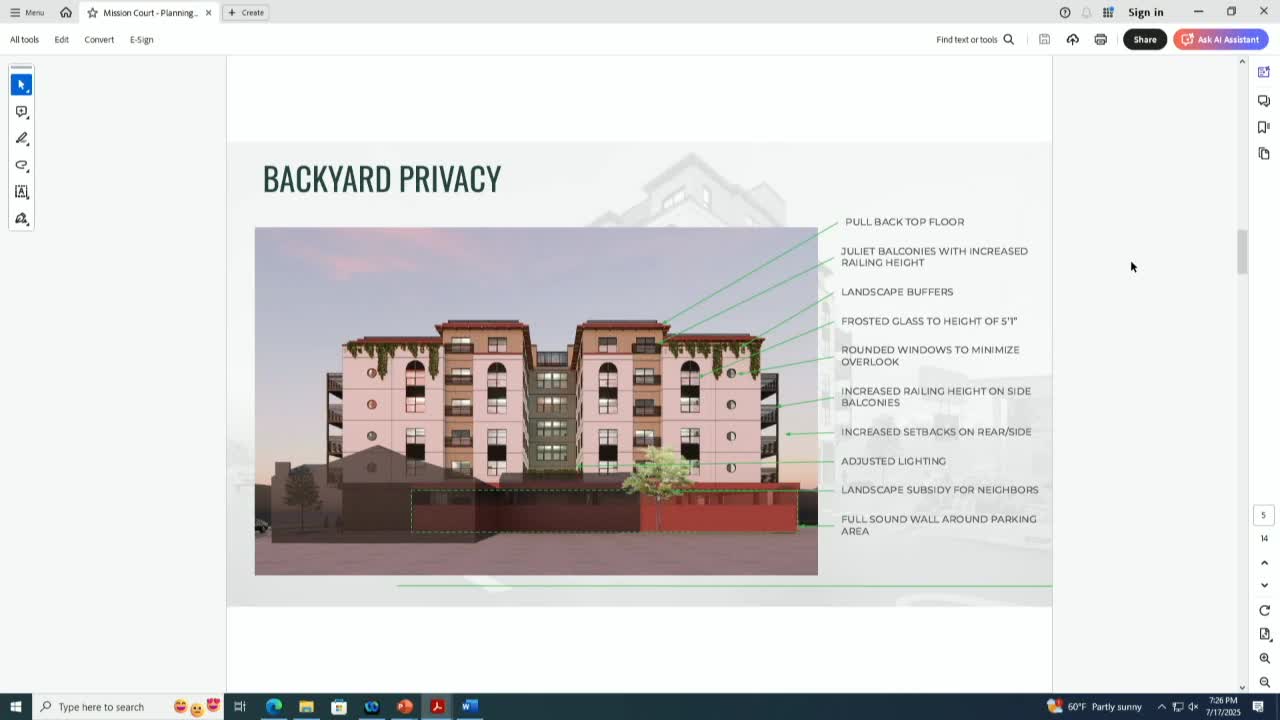Santa Cruz Project Aims to Reduce Car Dependence with Transit-Oriented Development
July 27, 2025 | Santa Cruz County, California
This article was created by AI summarizing key points discussed. AI makes mistakes, so for full details and context, please refer to the video of the full meeting. Please report any errors so we can fix them. Report an error »

The Santa Cruz City Planning meeting on July 17, 2025, focused on a proposed housing project aimed at promoting sustainable transportation and minimizing traffic impact in the West Side neighborhood. The project, located on Santa Cruz's busiest street, is designed to encourage a walkable and bike-friendly lifestyle, with direct access to a multi-use bike path and nearby transit stops.
Key discussions highlighted the project's strategic location, which is within half a mile of 12 major transit stops serviced by four bus lines, providing easy access to UC Santa Cruz and downtown. The design aims to reduce reliance on cars, with the developer planning to offer tenants bus passes and bike share subsidies. This initiative aligns with the city's goals to promote alternative transportation methods.
Traffic concerns were a significant topic during public hearings, particularly regarding Mission Street, which currently experiences heavy congestion with approximately 34,000 vehicles daily. However, a trip generation study indicated that the new project would only add about 29 vehicle trips during peak hours, a minimal increase that the developers believe will not significantly impact traffic flow.
To further address neighborhood parking issues, the project is designed to prioritize renters without cars, particularly students who face challenges in car ownership due to limited parking options. This approach aims to alleviate pressure on local parking while supporting the project's transit-oriented objectives.
Overall, the meeting underscored the city's commitment to sustainable development and community engagement, with plans to facilitate a neighborhood parking zone to further mitigate the project's impact on local availability. The next steps will involve continued discussions and adjustments based on community feedback.
Key discussions highlighted the project's strategic location, which is within half a mile of 12 major transit stops serviced by four bus lines, providing easy access to UC Santa Cruz and downtown. The design aims to reduce reliance on cars, with the developer planning to offer tenants bus passes and bike share subsidies. This initiative aligns with the city's goals to promote alternative transportation methods.
Traffic concerns were a significant topic during public hearings, particularly regarding Mission Street, which currently experiences heavy congestion with approximately 34,000 vehicles daily. However, a trip generation study indicated that the new project would only add about 29 vehicle trips during peak hours, a minimal increase that the developers believe will not significantly impact traffic flow.
To further address neighborhood parking issues, the project is designed to prioritize renters without cars, particularly students who face challenges in car ownership due to limited parking options. This approach aims to alleviate pressure on local parking while supporting the project's transit-oriented objectives.
Overall, the meeting underscored the city's commitment to sustainable development and community engagement, with plans to facilitate a neighborhood parking zone to further mitigate the project's impact on local availability. The next steps will involve continued discussions and adjustments based on community feedback.
View full meeting
This article is based on a recent meeting—watch the full video and explore the complete transcript for deeper insights into the discussion.
View full meeting
